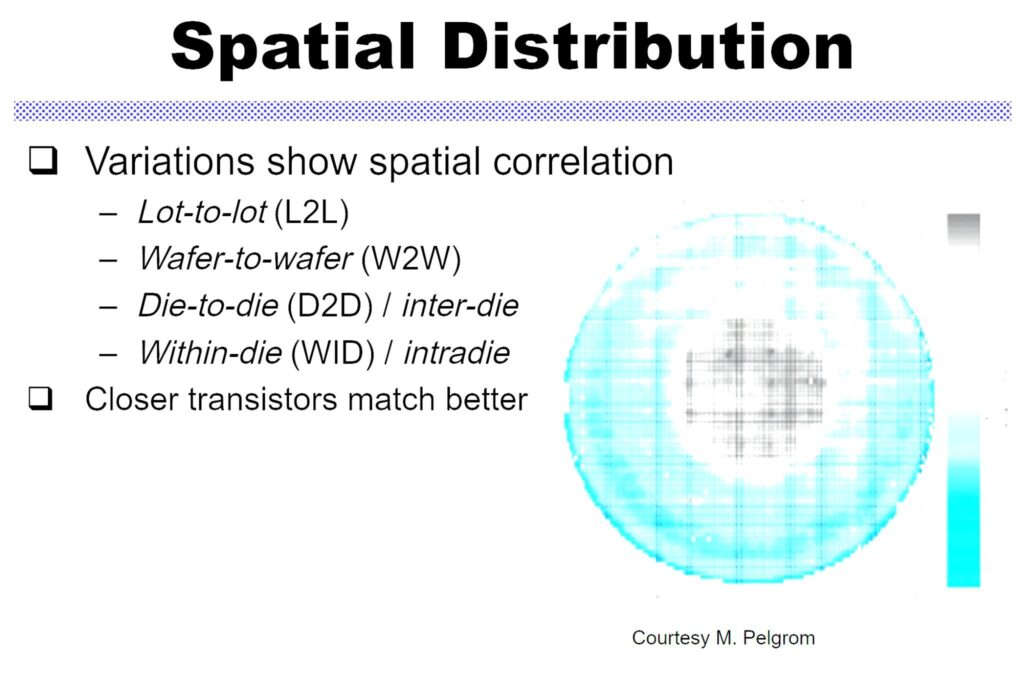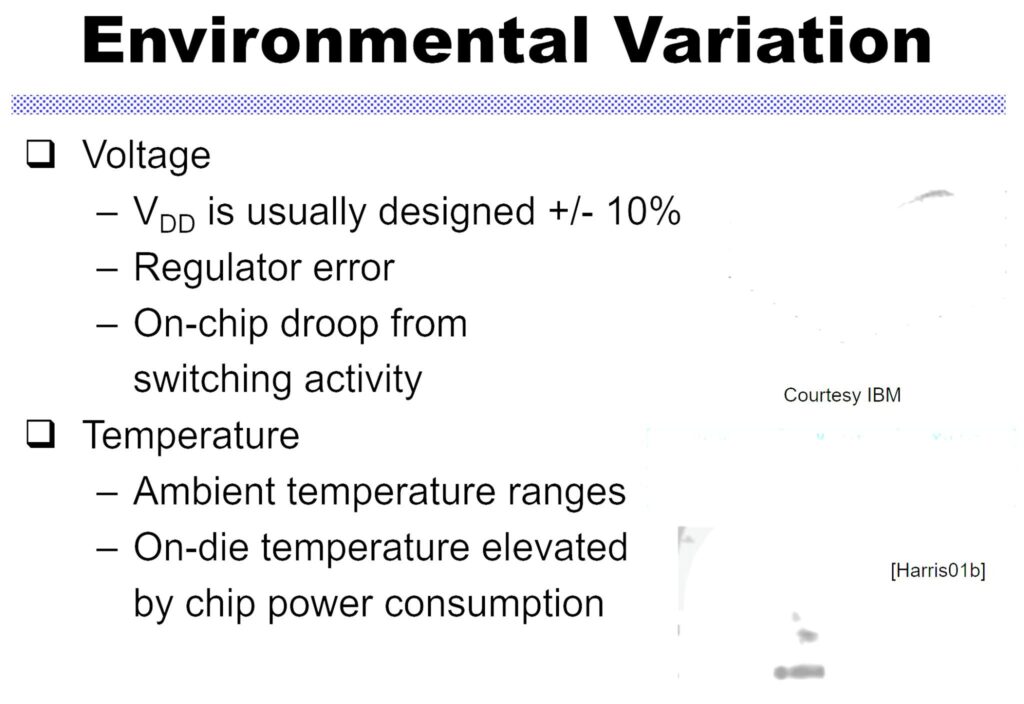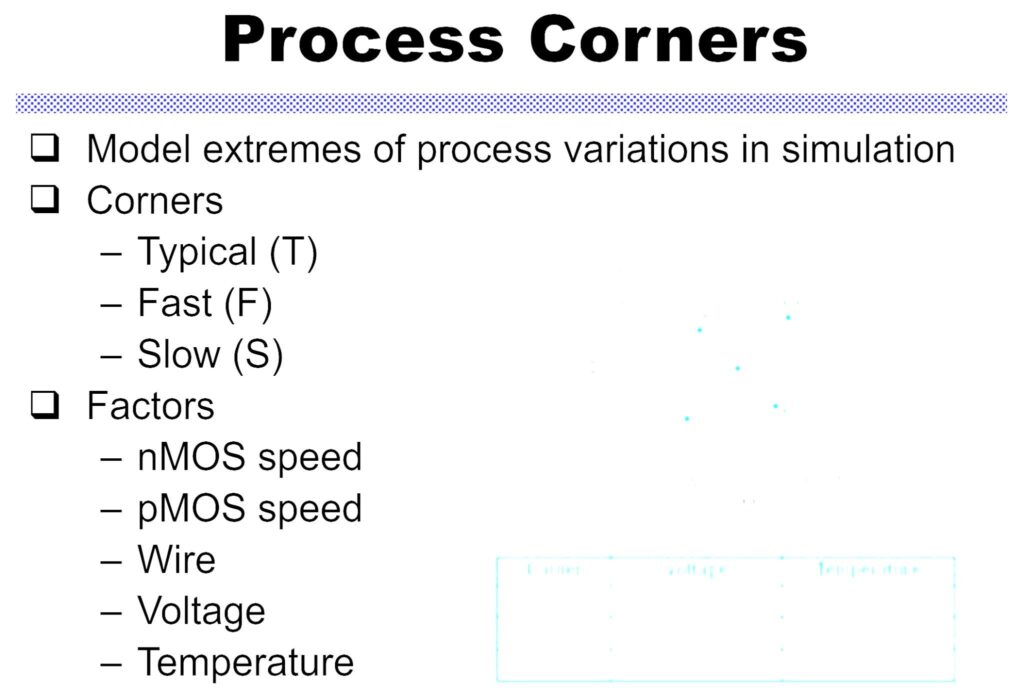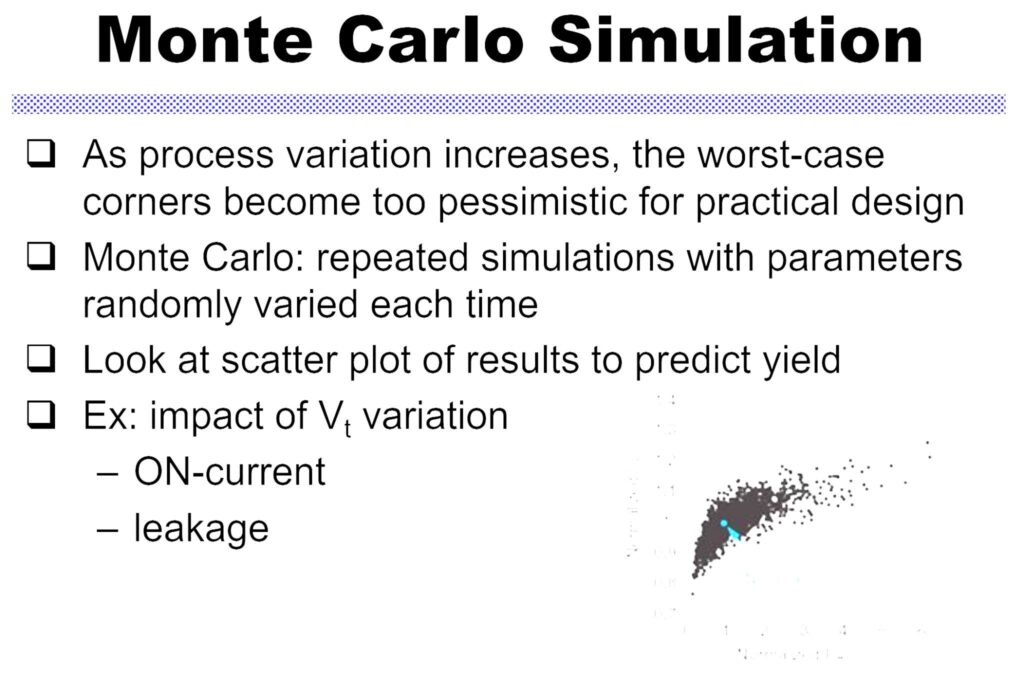Exploring Process Variations: Implications for Analog Circuit Designers


Process_variations in analog devices refer to the deviations in performance and characteristics caused by inconsistencies in manufacturing processes. These variations can significantly impact the functionality, reliability, and overall performance of analog circuits. Here’s a detailed breakdown of the effects of process variations:
1. Types of Process Variations
– Random Variations: Caused by inherent manufacturing uncertainties, such as variations in doping concentrations, oxide thickness, and temperature fluctuations during fabrication. These are generally statistical and can be modeled using standard deviation.
– Systematic Variations: Arise from predictable manufacturing issues, like mask misalignment or non-idealities in the photolithography process. These variations often affect all devices on a chip similarly.


2. Effects on Analog Circuit Performance
– Gain Variability: Transistor parameters like threshold voltage and transconductance can vary, affecting the gain of amplifiers. This variability can lead to inconsistent signal amplification.
– Offset Voltage Drift: Operational amplifiers may exhibit variations in offset voltage due to mismatched components. This can lead to inaccurate signal processing in applications such as instrumentation amplifiers.
– Bandwidth Fluctuations: Process variations can influence the frequency response of filters and amplifiers, potentially causing shifts in bandwidth and affecting system performance.
– Linearity and Distortion: Variations in device parameters can lead to non-linear behavior, increasing distortion in analog signals. This is particularly critical in audio and RF applications.
– Noise Performance: Random variations can affect noise characteristics, altering the signal-to-noise ratio (SNR) and overall system performance, especially in low-signal applications.
3. Impact on Design and Simulation
– Statistical Analysis: Designers often use Monte Carlo simulations to assess how variations will affect circuit performance. This helps in understanding the likelihood of specific outcomes and in designing for worst-case scenarios.
– Robust Design Techniques: Implementing design methodologies that enhance tolerance to variations, such as using feedback mechanisms, can help mitigate adverse effects.
– Calibration and Compensation: Some designs incorporate calibration techniques to adjust for variations post-manufacture, ensuring consistent performance across devices.
Conclusion
Process variations have a profound impact on the performance and reliability of analog devices. Understanding these variations and their effects is crucial for designers to create robust and reliable analog circuits.


